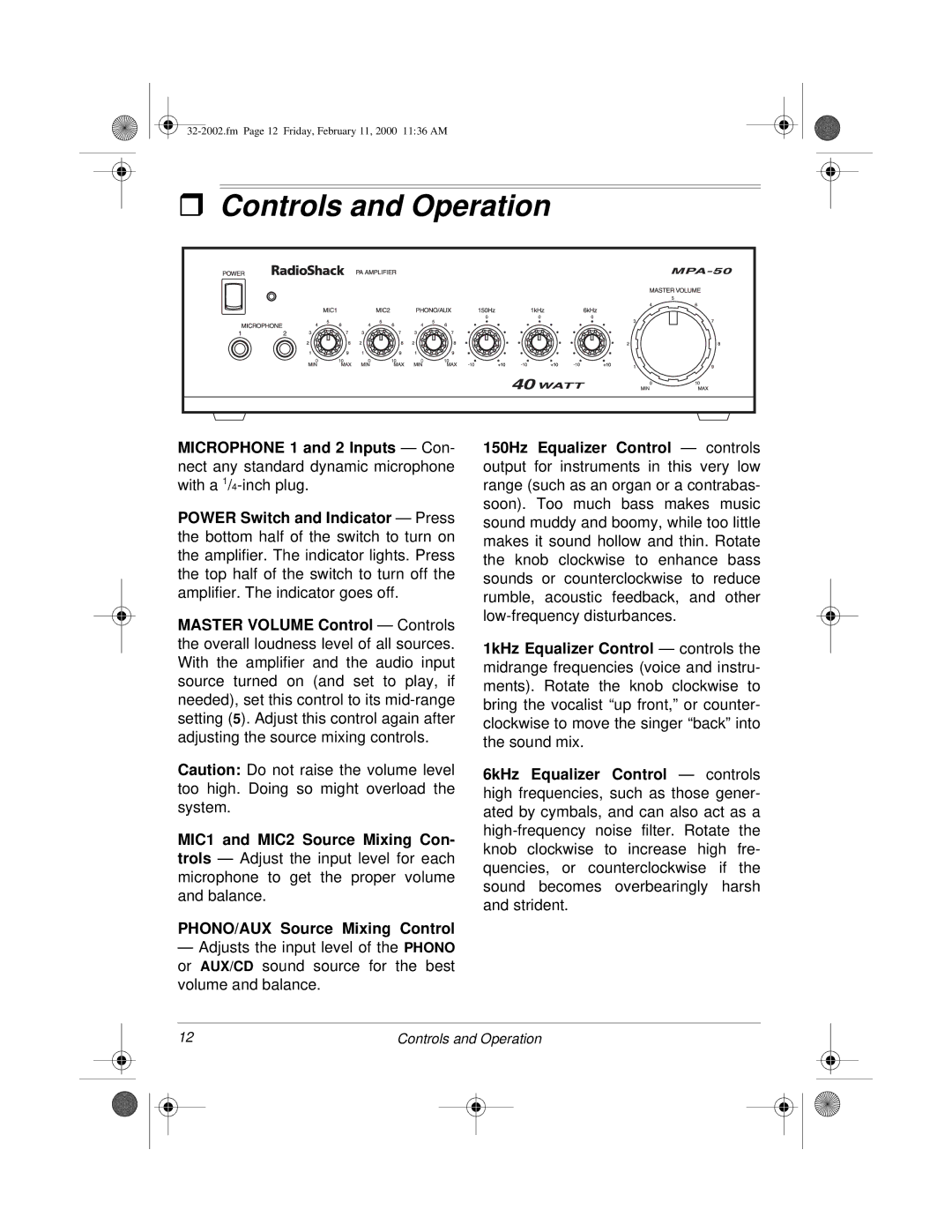
ˆControls and Operation
MICROPHONE 1 and 2 Inputs — Con- nect any standard dynamic microphone with a
POWER Switch and Indicator — Press the bottom half of the switch to turn on the amplifier. The indicator lights. Press the top half of the switch to turn off the amplifier. The indicator goes off.
MASTER VOLUME Control — Controls the overall loudness level of all sources. With the amplifier and the audio input source turned on (and set to play, if needed), set this control to its
Caution: Do not raise the volume level too high. Doing so might overload the system.
MIC1 and MIC2 Source Mixing Con- trols — Adjust the input level for each microphone to get the proper volume and balance.
PHONO/AUX Source Mixing Control
—Adjusts the input level of the PHONO or AUX/CD sound source for the best volume and balance.
150Hz Equalizer Control — controls output for instruments in this very low range (such as an organ or a contrabas- soon). Too much bass makes music sound muddy and boomy, while too little makes it sound hollow and thin. Rotate the knob clockwise to enhance bass sounds or counterclockwise to reduce rumble, acoustic feedback, and other
1kHz Equalizer Control — controls the midrange frequencies (voice and instru- ments). Rotate the knob clockwise to bring the vocalist “up front,” or counter- clockwise to move the singer “back” into the sound mix.
6kHz Equalizer Control — controls high frequencies, such as those gener- ated by cymbals, and can also act as a
12 | Controls and Operation | ||||
|
|
|
|
|
|
|
|
|
|
|
|
|
|
|
|
|
|
